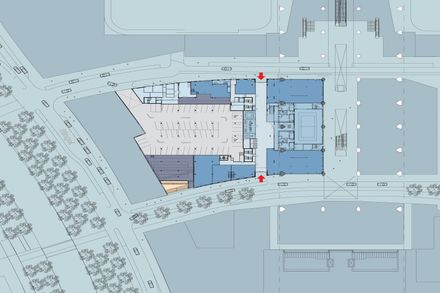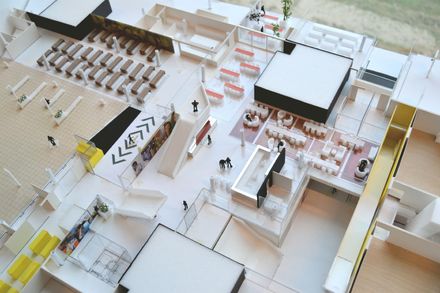MBO College North
MBO COLLEGE NORTH
Burton Hamfelt Architectuur
ARCHITECTS
Burton Hamfelt Architectuur
AREA
21000.0 m²
LOCATION
Amsterdam, The Netherlands
YEAR
2012
ENGINEERS
ABT (Phase 1), Van Rossum (Phase 2)
CATEGORY
Mixed Use Architecture, Educational Architecture
CLIENT
ROC van Amsterdam (Phase 1), MJ De Nijs Projectontwikkeling (Phase 2)
ADVISORS
Twynstra Gudde, ICS Adviseurs, BOA Adviseurs
(Phase 1), Draaijer + Partners (Phase 2)
Text description provided by architect.
In the new knowledge economy education is increasingly important to the daily operations of life and business in the city.
New types of multifunctional education buildings have stepped into this role, strategically positioned in the city’s transportation network as well as being focal points for the enterprising student and talent seeking businesses; a total educational experience.
The “community college” concept used for this school building is based on designing a sustainable and multifunctional program where the school building is transformed into a new urban destination, for both students and the community.
The location is complex and demanding being both right beside and wrapping under the elevated subway station of the new North-South subway line in the upgraded center of Amsterdam North (CAN).
Designed as a series of five interchangeable separate buildings, the colorful and parceled facade is primarily related by the functional distribution of the building and at the same time intended as an eye-catcher for the whole area.
Unique to MBO College North is the combination of ‘two schools in one’ building, the Bredero College (MAVO) and the ROC van Amsterdam (MBO).
These schools were brought together to stimulate career-based learning from technical high school to higher vocational school levels. The architectural concept is spatial circulation models were each school is both united and separated through a double helix stair concept.
What results is an Escher painting like space where the students from each school see each other but cannot be in reach of each other. While each school has it’s own separate entrance and circulation, the teachers enjoy shared facilities such as a canteen, library, library and support functions.






















